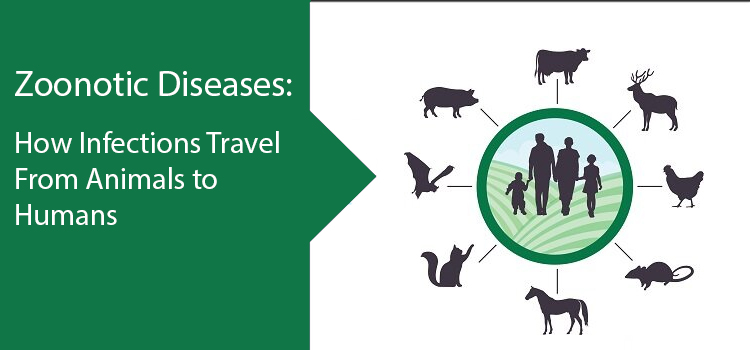With COVID19 infections becoming a global pandemic, people have a large number of questions. One of these is how a virus such as SARS-CoV-2 can move from an animal host to a human one. This virus is responsible for the current pandemic, and many experts outline its impact as similar to a zoonotic disease. This blog explores such diseases in more detail.
A Look at Zoonotic Diseases
There is a lot of speculation as to whether bats, pangolins, or snakes were responsible for the new coronavirus. However, experts believe that it did, in fact, originate in animals. At the time of this blog, the number of COVID19 cases in the world is staggering. Hundreds of thousands of people have the infection while tens of thousands have already died from it.
However, such diseases are not a new occurrence. Animals have been carrying diseases for decades that result in human infections and deaths. Illnesses like Ebola, rabies, dengue fever, and avian flu are all diseases carried by animals. All of them have caused billions of deaths all over the world between them.
Why Are Zoonotic Diseases So Dangerous to Humans?
Diseases that spread to humans from animals can be extremely dangerous. This is largely due to the difference in the immune systems of both species. But other variables also factor in, such as what type of animal the disease originated in. For instance, avian flu originated in birds while MERS originated in bats.
The human immune system often finds itself incapable of dealing with animal-borne viruses. The reason is very simple: the immune system was never exposed to that virus. This meant that humans did not have a chance to develop a natural immunity to the disease. With humans also offering traveling diseases additional vectors to spread, it can quickly become a pandemic.
How Animal-Borne Diseases like Coronavirus Attack Humans
In the usual course of things, viruses either pass through the human gastrointestinal system or are destroyed by the immune system. However, in some cases, an animal virus can begin to replicate inside a human host before the immune system can kill it. When the virus first begins to replicate in the very first human, it can evolve to infect a different type of host than it is used to.
When this is happening, it is crucial for the immune system to retaliate. It needs to keep up with the evolving virus and develop an immune response. However, with novel diseases like SARS or COVID19 that the immune system has never encountered before, there is no existing immunity. That makes it even more critical for the immune system to come up with a response as fast as possible. The trouble is, the virus can evolve further and stay ahead of the immune system’s response.
Virus Vs Immunity
With the virus replicating and evolving as fast as it can, and the human immune system trying to respond equally fast, it turns into an invisible arms race. The virus could win, the immune system could win, or both could enter a stalemate. It bears noting that this only relates to viruses and not different diseases like mouth cancer.
There is a general assumption that as viruses evolve inside a host, they become less immediately dangerous to the host. Like any living organism, the virus wants to survive, and killing off its host too quickly won’t let it do that. This isn’t always the case. But a virus that adapts to human physiology may become less dangerous to humans in the long term. This is because the immune system forces it into a stalemate.
Animal Viruses That Don’t Infect Humans
While it is very important to watch out for signs of coronavirus, it is unfair to treat animals like pariahs. There are many animal viruses, even in the coronavirus family, that do not affect humans at all. These viruses have adapted completely to animal hosts and are harmless to human ones. Some examples include:
- Feline infectious peritonitis viruses carried by cats.
- Infectious bronchitis viruses carried by chickens.
- Transmissible gastroenteritis viruses carried by piglets.
Bats and Human Immunity
However, at the other end of the spectrum, an animal-borne virus that can infect humans can also be extremely harmful. This is especially true if the animal has defense mechanisms that humans don’t, or if there are stark differences in the immune systems. Bats have often been identified as carriers of a number of infectious diseases.
So what do bats possess that human beings don’t? How can they fly around with viruses like Ebola and not fall sick themselves when humans are severely affected. Researchers believe it is because bats have better immune capabilities. They have a hyper-vigilant, always-on viral response that allows them to carry viruses without being affected. The same response in other mammals would lead to constant and painful inflammations, but bats have evolved to account for that. This can also cause the virus to become stronger as it evolves, making it more dangerous to humans.




